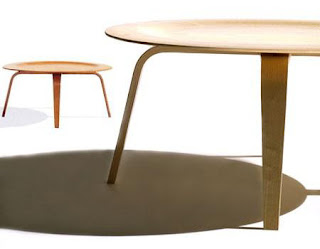The kids are heading back to school and we’re starting to think about fall in Vermont. To close out this summer-long series of top-five lists on the blog, I’m turning back to furniture design, a field of study that for many architects is an unencumbered source of design purity.
I started the summer with a review of my top five favorite chairs. To wrap up the series, I’m looking at the chair’s natural counterpart: the table. This list includes some classics, and some new innovations, but they’re all noteworthy for their design integrity and bold statements.
1. FUSION TABLE by Aramith
Many tables have multiple uses, but the Fusion Table actually changes itself to accommodate two functions: it is a regulation-sized billiards table, and a beautifully modern dining table.
I saw this table in person at NeoCon a few years ago and have been intrigued with the concept ever since. The wood dining surface removes to reveal a quality slate pool surface beneath, with just enough room for ball and cue storage. Because standard pockets would have hung down too far for dining, the table uses stretch nylon fabric to collect the balls that reverts back when not in use. And if that weren’t all, the table accommodates the difference between the standard 30” dining height and the 33” height for game play. The table’s legs rise up 3” with an auto-locking and auto-leveling mechanism that ensures a level playing surface at regulation height.
Pool tables take up a lot of space in a house, so this could be the answer if you need to multitask to fit everything in.
2. CAMPFIRE PAPER TABLE by Turnstone

The Paper Table is the office version of gathering around the campfire. A giant pad of white paper functions as the table’s surface so that you can brainstorm with coworkers, make a quick note, tear off a sheet, and reveal a clean page underneath. It’s also available with a glass top that you can scribble on with dry-erase markers.
As much as I like this table, I liked the design prototype even more. The original concept was much larger, with a donut-shaped paper top that was visible along the edge. The whole thing was a giant spool of paper. But I’m told you practically needed a forklift to move the thing, so when it came time for production, they had to scale it down a bit.
3. NOGUCHI COFFEE TABLE by Herman Miller

This classic table by Japanese-American sculptor Isamu Noguchi was originally created in 1944. The Noguchi Coffee Table is a brilliantly simple design consisting of only three elements, a freeform glass top and two interlocking solid wood legs. It is a perfect balance between art and furniture. The piece presents a feeling of delicate fluidity, but it is in fact a very sturdy and durable table.
The Noguchi Coffee Table is available through Herman Miller. You will know yours is an authentic Noguchi, and not one of the many copycats out there, by the signature that is printed along the longest edge of the glass top.
4. CUBE TABLE by Brent Comber
Our interiors department is constantly scouring the furniture market looking for unique pieces for use in our projects. This is one of my favorite finds that we proposed recently for a ski resort project.
The cube table is a single block of solid Douglas Fir. It comes in three sizes: 14.5”, 15.5”, or 17.5” square. The large one weighs in at a whopping 110 pounds of solid wood. It looks simple, but this is actually an extremely difficult piece to produce.
The artist is Brent Comber, a woodworker who crafts furniture and sculpture out of his studio in British Colombia. According to Comber, this is the most difficult piece of his to reproduce successfully. The cube table takes a natural material and shapes it into a form that is by definition unnatural: the cube is the only form that does not occur in nature. This is the beauty of the piece: a statement of man exerting his will upon a material.
5. EAMES MOLDED PLYWOOD COFFEE TABLE by Herman Miller
As an Eames fan, I have to include one of the classic mid-century modern Eames tables in my list. The molded plywood coffee table, designed in 1946, utilizes the same bent plywood techniques that Charles and Ray perfected throughout their career. The round top of this table is slightly indented to form a tray, and the bent plywood legs are a perfect match to their famous molded plywood chairs. This table is a classic because of its simplicity in design, strength in form, and functional clarity.
Questions? Comments? Let me know what you think. And thanks for reading.




No comments:
Post a Comment